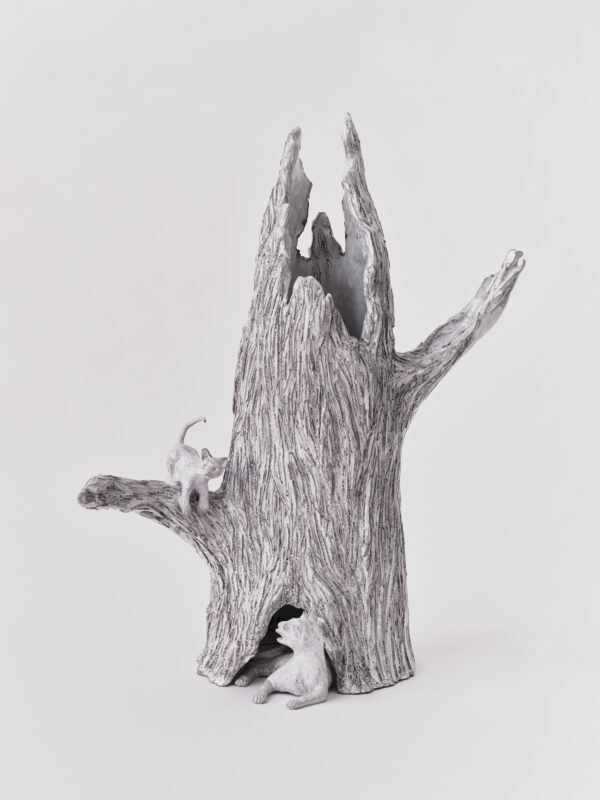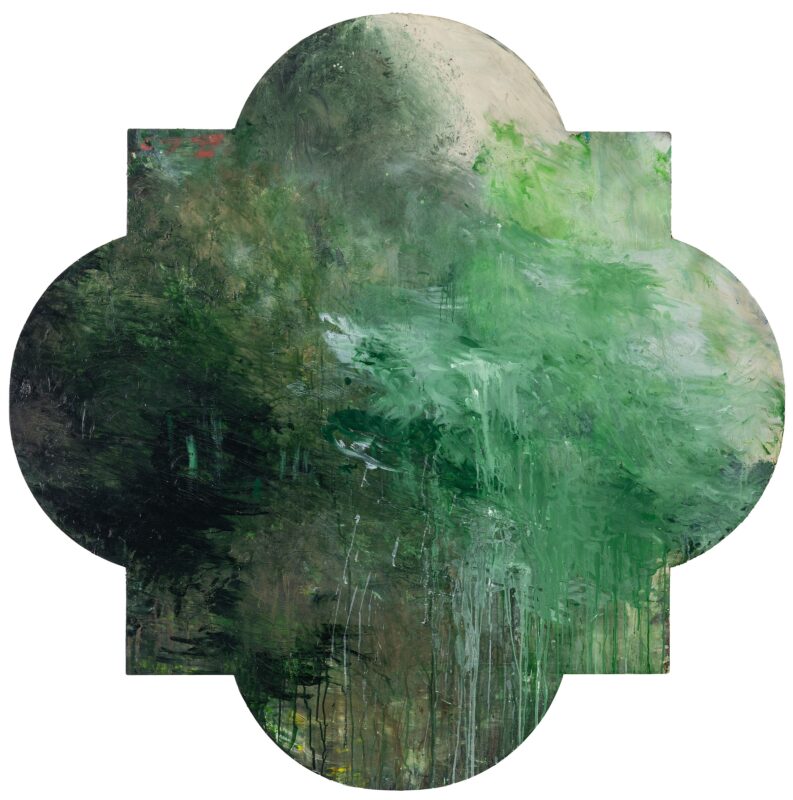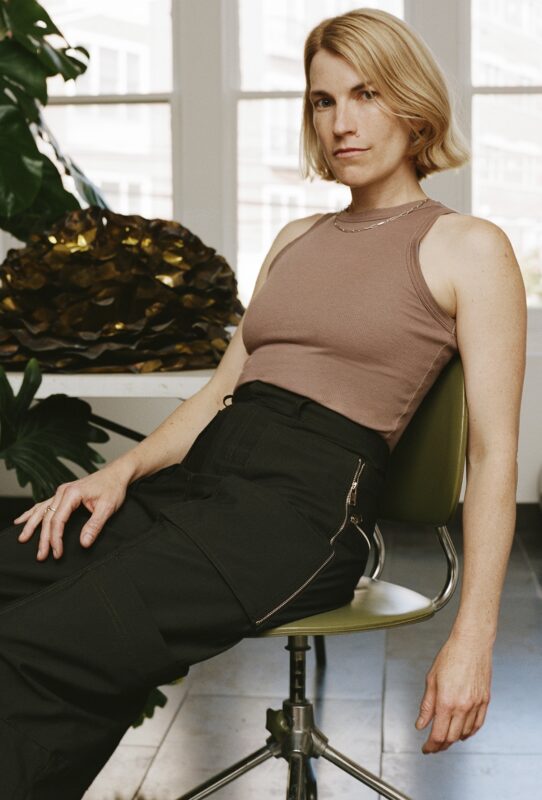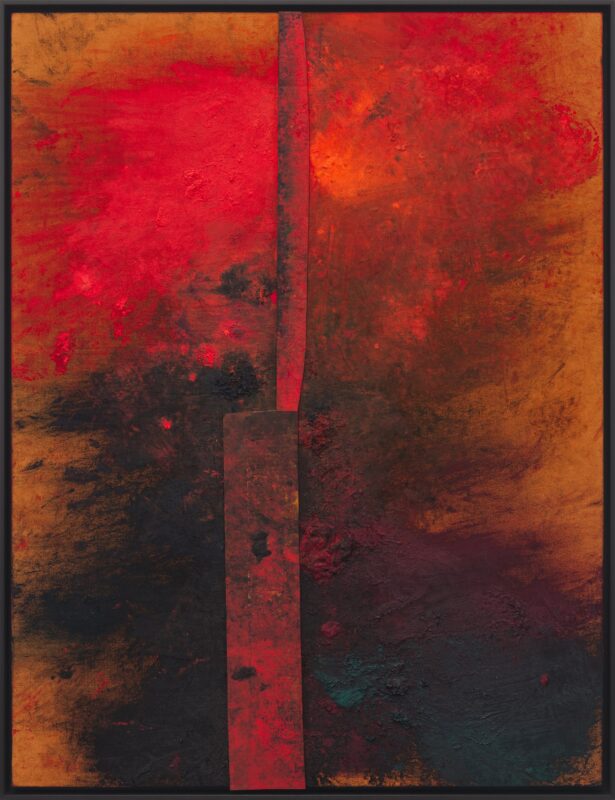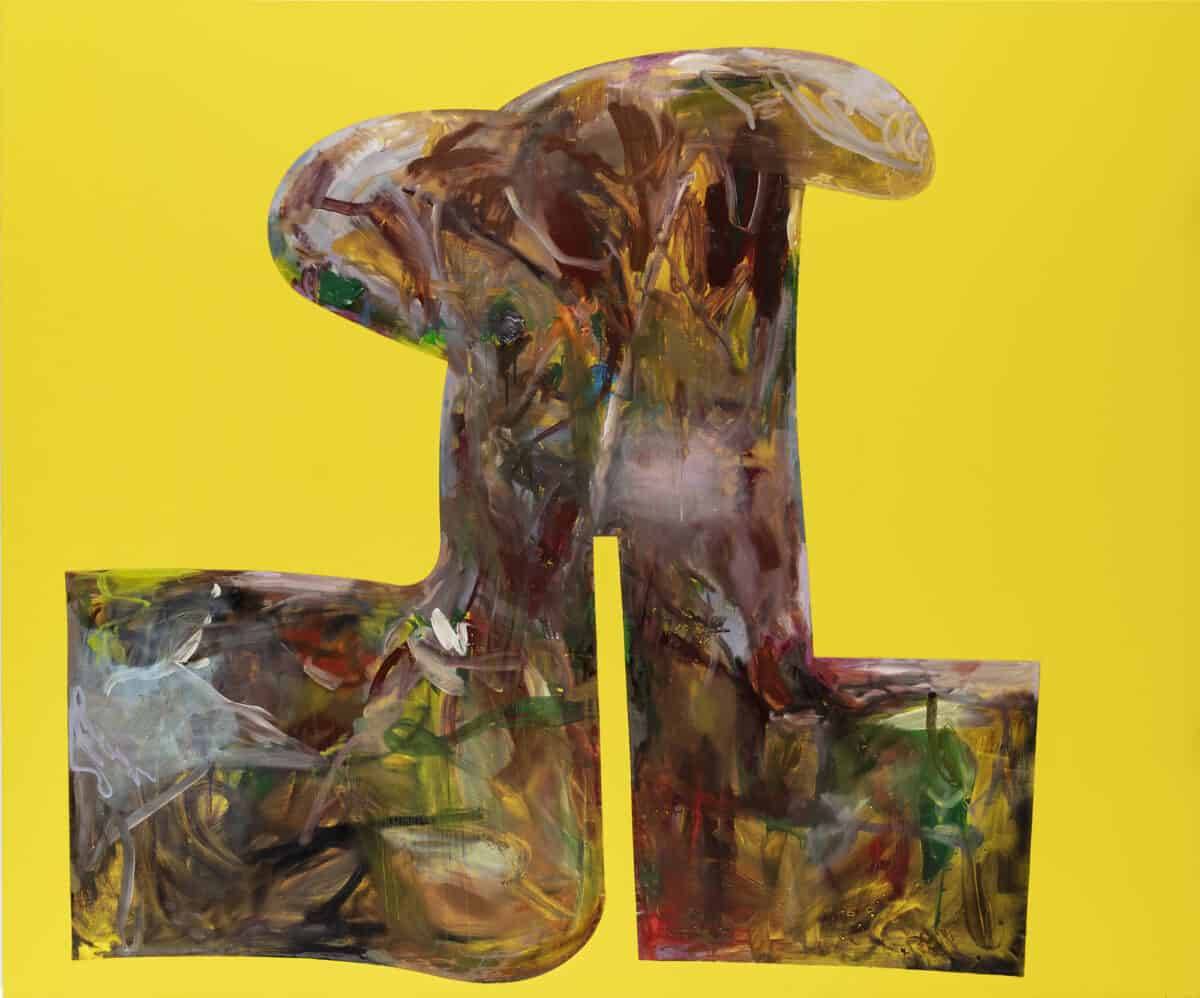
Gagosian to open the ömen: Albert Oehlen paintings and Paul McCarthy sculptures, an exhibition of recent paintings by Albert Oehlen juxtaposed with large-scale sculptural works by Paul McCarthy.
Oehlen uses abstract, figurative, and collaged elements—often applying self-imposed formal constraints—to disrupt the histories and conventions of modern painting while acknowledging the continuing significance of classical art. Approaching his practice as a perceptual challenge, he moves freely between planned and improvised strategies. And while championing self-consciously “bad” painting characterized by crude drawing and jarring coloration, he infuses expressive gesture with Surrealist attitude, disparaging the quest for stable form and meaning.
McCarthy has been known since the 1970s for performances, videos, sculptures, and installations that confront viewers with a perverse Grand Guignol vision populated by an array of grotesque characters. Pairing a focus on sex and violence with a consciously infantilized approach to human bodily function, he probes the darkest corners of the American subconscious, exposing its synthetic manifestations in the mass media and built environment. McCarthy’s clownish, dystopian twist on utopian European Actionism continues to exert a powerful influence.
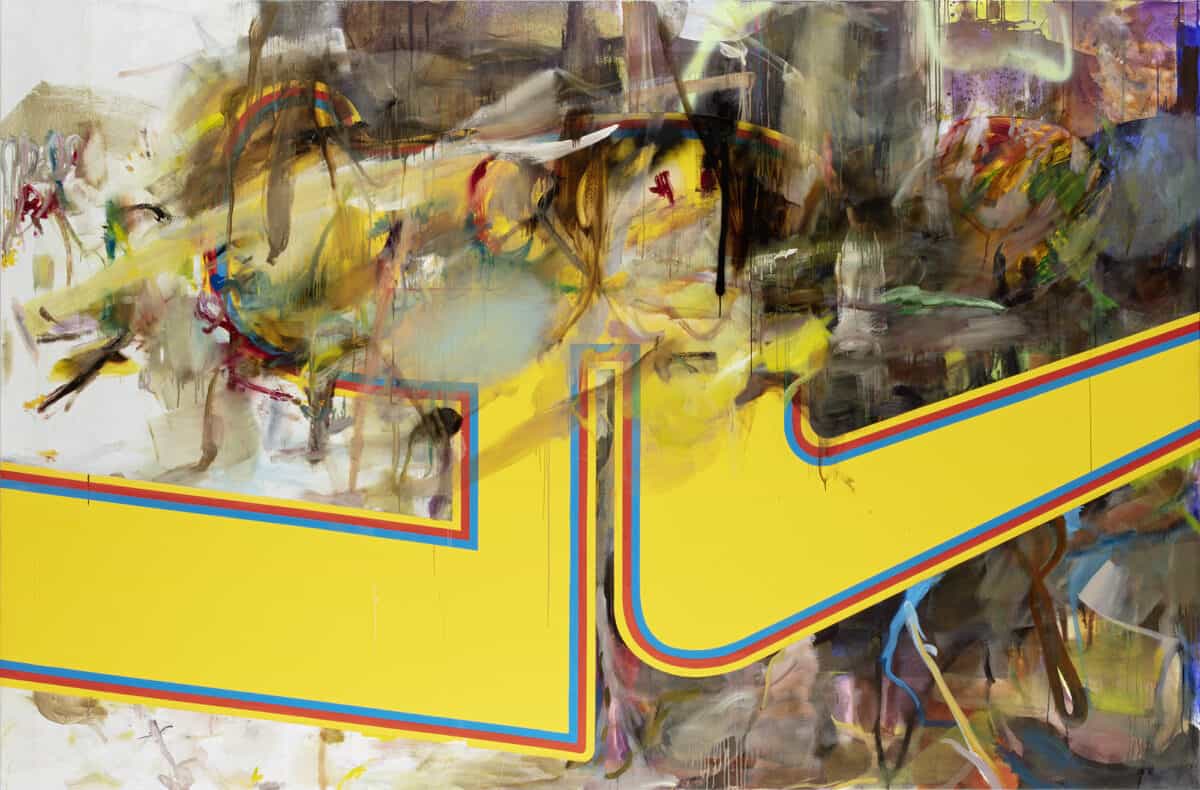
Oehlen’s works in this exhibition are focused on his cryptic Ömega Man motif, a genderless humanoid form inspired by the character of Dr. Robert Neville in the dystopian sci-fi action movie The Omega Man from 1971. As the doomed survivor of a global pandemic, Neville symbolizes the runaway scientific development that led to humanity’s downfall. In Ömega Man 6 and 7 (both 2021), the figure’s off-kilter shape emerges from the misalignment of two grids of color; in other paintings its mottled silhouette is positioned against a bright yellow ground, recalling the combination of stark line and intense hues in the artist’s tree paintings. It is also sometimes outlined in blue, red, and yellow, or rendered as a masked area of varied brushstrokes distinguishable only by its sharply differentiated boundaries.
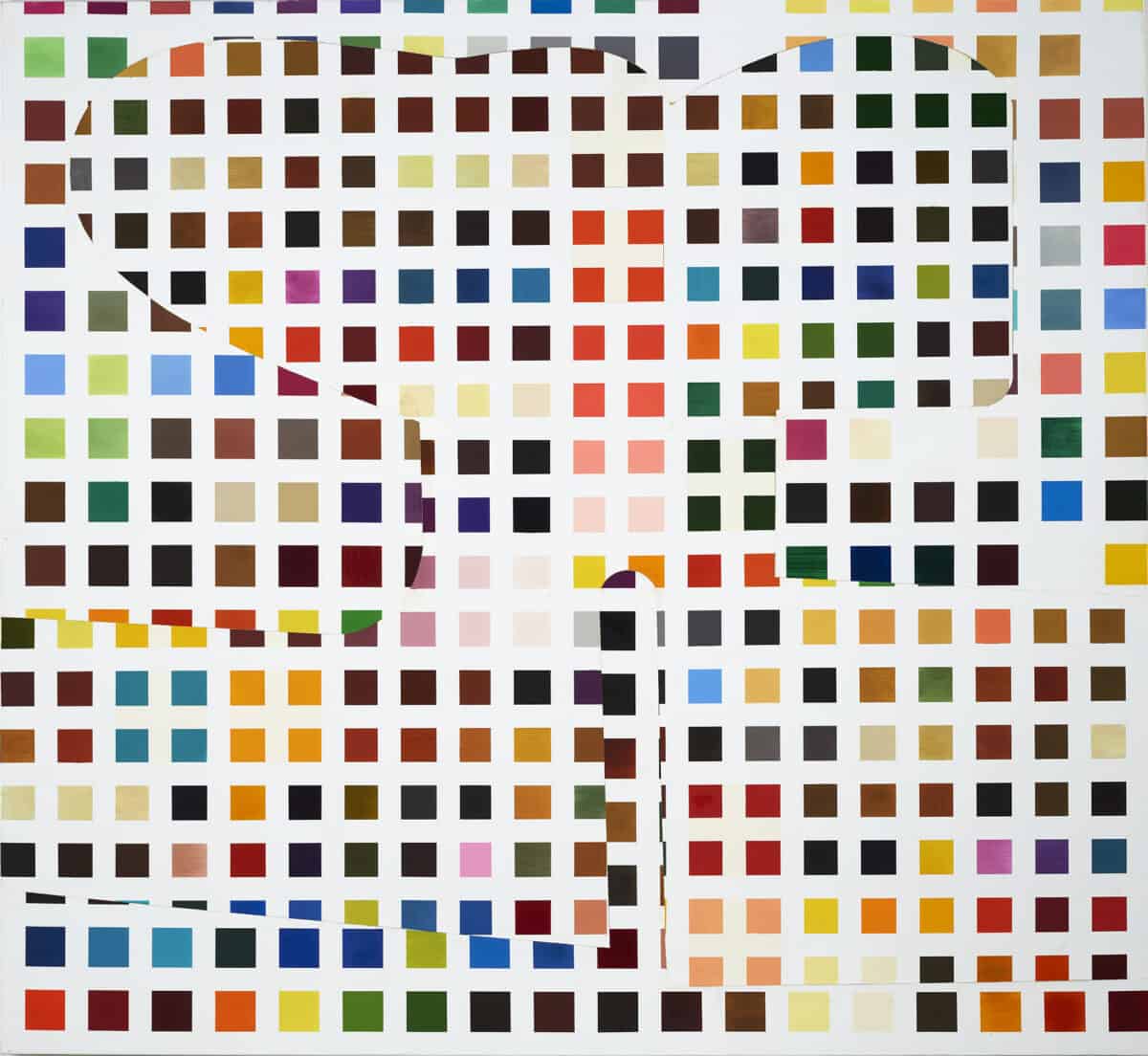
Oehlen invited McCarthy to participate in the ömen in part to draw out a shared fascination with works that are “on the way to becoming something else,” and that may exist in multiple forms and versions. The exhibition also reveals other links, including that between Oehlen’s recent film with Oliver Hirschbiegel, The Painter (2021), and McCarthy’s monumental installation The King (2006–11). In the film, actor Ben Becker portrays Oehlen in the process of producing a new work, juxtaposing and confusing moments of frustration and fulfillment, authenticity and artifice. In McCarthy’s sculptural installation, an elevated platform is surrounded by airbrush paintings of images from popular magazines, produced by a hired illustrator. Also present, seated on a wooden throne, is a nude, bewigged, and partially dismembered silicone mannequin modeled after the artist.
Elsewhere in the exhibition, McCarthy’s Paula Jones, Melinda (2004–09) delves deeper and with similarly coruscating irony into pervasive misogyny by portraying the first woman to denounce Bill Clinton for sexual harassment, while his Henry Moore Foam (2004) pays homage to the titular modernist sculptor via a huge Styrofoam replica of a Moore-inspired work that McCarthy produced as a schoolboy. This weathered-looking figure—the product of an extended process of casting and recasting—echoes the part-abstracted forms in Oehlen’s paintings, underscoring again how both artists toy with and deconstruct the stubborn myth of white, male creative heroism.
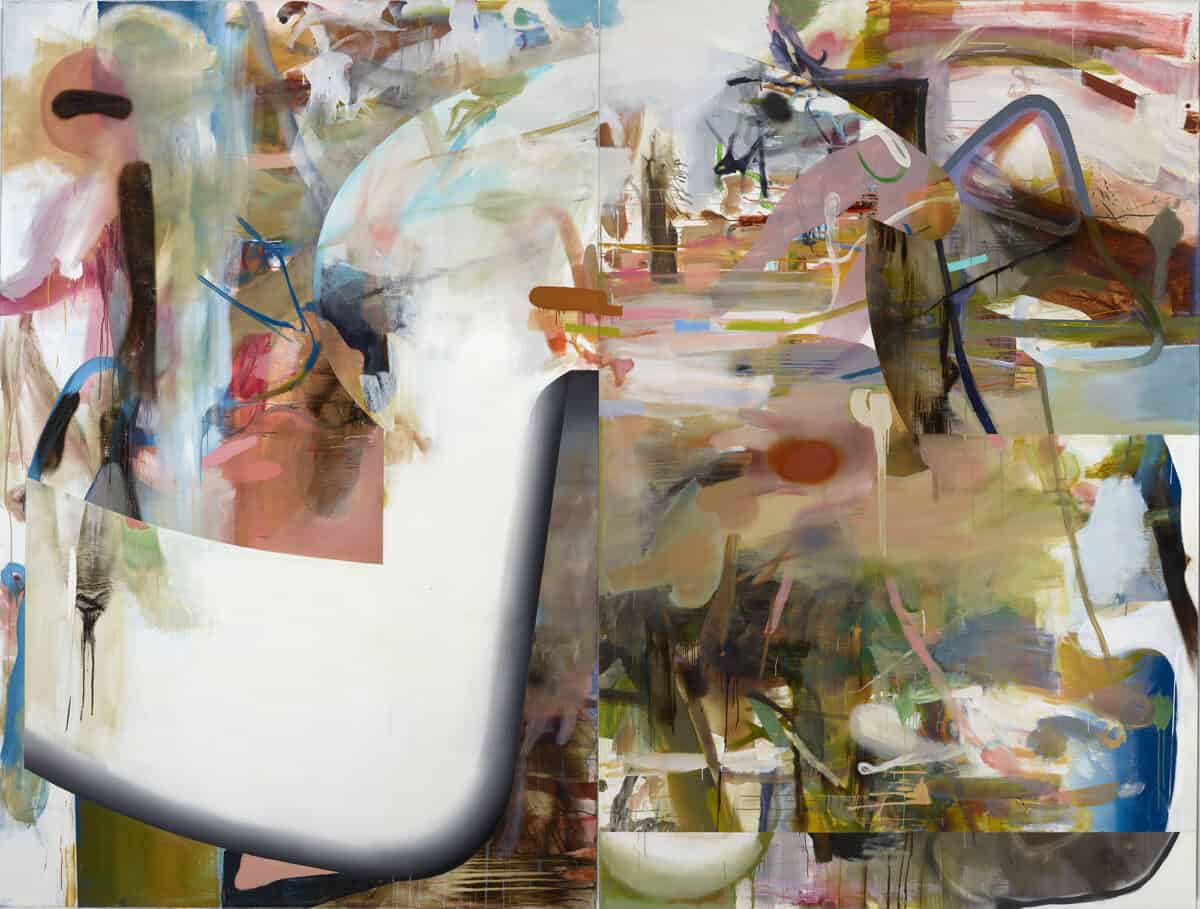
THE ÖMEN: ALBERT OEHLEN PAINTINGS AND PAUL MCCARTHY SCULPTURES, Opening reception: Wednesday, March 8th, 6–8pm, March 8th–April 22nd, 2023, Gagosian, 555 West 24th Street, New York
An accompanying catalogue features essays by John Kelsey on Oehlen’s work and Hamza Walker on McCarthy’s.
About the artists
Albert Oehlen was born in 1954 in Krefeld, Germany, and currently lives and works in Switzerland. Collections include the Museum of Modern Art, New York; Museum of Contemporary Art, North Miami, FL; Cleveland Museum of Art; Art Institute of Chicago; the Broad, Los Angeles; Museum of Contemporary Art, Los Angeles; Museo Jumex, Mexico City; Tate, London; Centre Pompidou, Paris; Kunsthaus Zürich; Museum Ludwig, Cologne, Germany; and Museum für Moderne Kunst, Frankfurt am Main, Germany. Exhibitions include Museo di Capodimonte, Naples, Italy (2009); Réalité Abstraite, Musée d’Art moderne de la Ville de Paris (2009); Terpentin, Kunstmuseum Bonn, Germany (2012); Malerei, Museum Moderner Kunst Stiftung Ludwig Wien, Vienna (2013); 55th Biennale di Venezia (2013); Die 5000 Finger von Dr. Ö, Museum Wiesbaden, Germany (2014); Home and Garden, New Museum, New York (2015); An Old Painting in Spirit, Kunsthalle Zürich (2015); Behind the Image, Guggenheim Bilbao, Spain (2017); Woods near Oehle, Cleveland Museum of Art (2018); TRANCE, Aïshti Foundation, Beirut (2018); Cows by the Water, Palazzo Grassi, Venice (2018– 19); Unfertig, Lokremise Kunstmuseum St. Gallen, Switzerland (2019); Serpentine Galleries, London (2019–20); and Big Paintings by Me with Small Paintings by Others, Museo d’arte della Svizzera italiana, Lugano, Switzerland (2021–22).
Paul McCarthy was born in 1945 in Salt Lake City and lives and works in Los Angeles. Collections include the Solomon R. Guggenheim Museum, New York; Metropolitan Museum of Art, New York; Whitney Museum of American Art, New York; Hammer Museum, Los Angeles; Museum of Contemporary Art, San Diego; Museum Moderner Kunst Stiftung Ludwig Wien, Vienna; Frac Languedoc-Roussillon, Montpellier, France; and Frac Poitou-Charentes, Angoulême and Linazay, France. Exhibitions include LaLa Land Parody Paradise, Haus der Kunst, Munich (2005); Head Shop/Shop Head: Works from 1966–2006, Moderna Museet, Stockholm (2006, traveled to Stedelijk Museum voor Actuele Kunst, Ghent, Belgium, and Aarhus Kunstmuseum, Denmark, through 2007); Central Symmetrical Rotation Movement—Three Installations, Two Films, Whitney Museum of American Art, New York (2008); Paul McCarthy’s Low Life Slow Life. Part 2, California College of the Arts, Wattis Institute for Contemporary Arts, San Francisco (2009); The Box, Neue Nationalgalerie, Berlin (2012); Chocolate Factory, Monnaie de Paris (2014); Drawings, Renaissance Society, Chicago (2015); Kulturzentrum Lokremise, St. Gallen, Switzerland (2016); Head Space, Drawings 1963–2019, Hammer Museum, Los Angeles (2020); and Dead End Hole, KODE, Bergen, Norway (2021). He has participated in many international events, including the Berlin Biennial (2006); SITE Santa Fe (2004); Whitney Biennial (1995, 1997, 2004); and Biennale di Venezia (1993, 1999, 2001).
